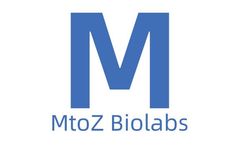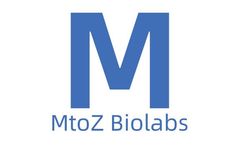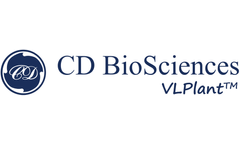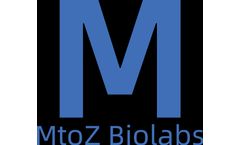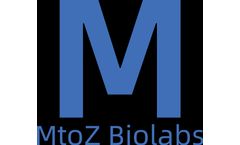Refine by
Biosciences Articles & Analysis: Older
63 articles found
Knockin cell line generation represents a pivotal advancement in genetic engineering, providing vital tools for biological research and therapeutic development. This process involves the integration of specific DNA sequences into precise loci within the genome, allowing scientists to explore gene function, model diseases, and develop new treatments. Understanding Knockin Cell Line Generation At ...
Operational Taxonomic Units (OTUs) serve as fundamental units in the realm of numerical taxonomy, particularly in the study of microbial ecology. These units can represent various biological classifications, including individuals, species, genera, or even higher taxonomic levels. The term "operational taxonomic unit" was introduced to address the discrepancies between traditional taxonomic ...
HCEC-12 is a well-established human corneal epithelial cell line derived from human corneal tissue. It plays a crucial role in ocular research, particularly for studies related to corneal physiology, wound healing, and the pathogenesis of various ocular diseases. This article delves into the characteristics, applications, and significance of the HCEC-12 cell line in biological and medical ...
Technological advancements and innovative research have continuously led to the discovery and development of new methodologies in the field of biological and medical sciences. One such breakthrough discovery is bacterial genome editing, which opens a new world of opportunities and challenges in the field of biotechnology and genomics. Understanding Bacterial Genome Editing Bacterial genome ...
Sialic acid proteins are a special type of glycoproteins, characterized by the presence of sialic acid at the end of the sugar chain. Sialic acid is a biologically important sugar molecule that plays a crucial role in many intercellular interactions, including cell recognition, adhesion and signal transduction. Therefore, the detection of sialic acid proteins holds significant value in disease ...
In epigenomics experiments, the use of parallel samples is to ensure the reliability and repeatability of experimental results. The choice of the number of parallel samples depends on various factors, including experimental design, expected variability, data analysis methods, etc. Here are some specific examples to illustrate the selection of the number of parallel samples in different ...
In the world of biotechnology and cell biology, the immortalization of primary cells has long been a challenge. Traditional methods often fall short when trying to establish immortal cell lines from certain species, such as chickens, monkeys, dogs, and even human T cells. However, with the innovative Epigenetic Induction of Cell Growth service offered by Creative Bioarray, a breakthrough in cell ...
CD BioSciences, a biotech company specializing in centrosomal study, has recently launched new services for anti-centrosome antibody development. ...
In-depth research on protein interaction plays a crucial role in life science research. Proteins are the main bearers of life activities, and their interactions form a complex molecular network within biological cells. Protein-Protein Interaction Sequencing (PPI-Seq) is an emerging technology. Based on high-throughput sequencing, it allows researchers to explore protein interactions at the whole ...
Overview of Single-Antibody SequencingSingle-antibody sequencing, as the name suggests, is a technique that uses a single antibody to sequence DNA. This method is based on the specificity of the antibody, which recognizes and binds to specific DNA sequences to accurately read the DNA.Working Principle of Single-Antibody SequencingThe basic principle of single-antibody sequencing is: select a ...
The field of biomaterials is undergoing a transformative shift, driven by the integration of artificial intelligence (AI) technologies. As the demand for advanced materials with tailored properties continues to grow in applications ranging from tissue engineering to medical devices, researchers are increasingly turning to the power of AI to accelerate biomaterials development and optimization. ...
The development of new and effective drugs is a complex and multifaceted process that requires the collaboration of scientists from diverse fields, including chemistry, biology, and computational modeling. At the heart of this endeavor lies the art of drug design - the strategic and methodical approach to creating molecules that can effectively target and modulate biological pathways to treat ...
Technological advancements and innovative research have continuously led to the discovery and development of new methodologies in the field of biological and medical sciences. One such breakthrough discovery is bacterial genome editing, which opens a new world of opportunities and challenges in the field of biotechnology and genomics. Understanding Bacterial Genome Editing Bacterial genome ...
Proteolysis Targeting Chimeras (PROTACs) are a novel approach for degrading target proteins. Recently, a new split-and-mix PROTAC (SM-PROTAC) system based on liposome self-assembly, known as LipoSM-PROTAC, was reported in the Journal of the American Chemical Society. The LipoSM-PROTAC system exhibits selective degradation of target proteins, with folate serving as a key ligand. In this study, the ...
CD BioSciences, a US-based biotechnology company focusing on the development of imaging technology, has announced the launch of its innovative line of Chromogenic Substrates for immunohistochemistry (IHC). ...
Bio-ink is a revolutionary material that is rapidly changing the fields of medicine, tissue engineering, and even bioprinting food. This fascinating substance is essentially a type of ink made from living cells and other biocompatible materials that can be used to 3D print complex biological structures. What is Bio-Ink Made Of? The composition of bio-ink can vary depending on the desired ...
ByMatexcel
In the realm of biological sciences, bile acids stand as pivotal molecules, playing a multifaceted role in various physiological processes within organisms. Bile acids are specialized molecules synthesized from cholesterol within the liver. These amphipathic compounds possess a hydrophilic region (carboxylic acid moiety) and a hydrophobic region (steroid backbone). Their distinctive structure ...
Introduction to Microbial Epigenetics Epigenetics has been defined as the study of stable alterations in gene expression potentials that arise during development and cell proliferation, or alterations in DNA function without alterations in DNA sequence. Modern epigenetic features refer to the alteration of DNA and/or associated proteins without nucleotide sequence variance, which transmits the ...
In the ever-evolving realm of biotechnology, the astonishing advancements in mRNA (messenger RNAs) synthesis are poised to revolutionize various aspects of biological research. This article delineates the eclectic vistas opened up by custom mRNA synthesis services that provide bespoke, high-quality solutions for researchers globally. mRNA synthesis, an integral element of our genetic machinery, ...
The phenomenal advancements in the realm of biotechnology have propelled the development of tools with remarkable potential, considerably altering the landscape of biological and medical research. One such groundbreaking tool topping the list among modern biotechnologies is the Single Guide RNA (sgRNA) library. This article will delve into the present and future applications of this revolutionary ...




